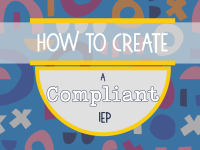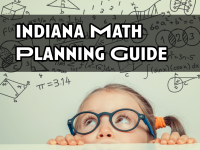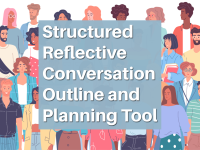Resources
Administrator Reflection Questions
As John Dewey famously noted, "We do not learn from experience... we learn from reflecting on experience." In the fast-paced world of education,...
Teacher Reflection Questions
As John Dewey famously noted, “We do not learn from experience... we learn from reflecting on experience.” In the fast-paced world of education...
AI in the Classroom Spotlight: Grade 5 Writing Feedback
Bethany Bammann, Plainfield Community School Corporation, will discuss implementing AI writing feedback with DOE rubrics uploaded, along with how she...
How to Create a Compliant IEP
Once it has been determined that a student qualifies for special education, a plan to specify and guide services and supports is required. In this...
Indiana Math Planning Guide
The Indiana Math Planning Guide is a practical tool designed to support grade-level teams in collaboratively planning instruction that is aligned to...
Lantern: Texts for Parents
Join WFYI for an insightful presentation on Lantern, a free text messaging service tailored for caregivers from pregnancy to preteen. Discover how...
AI in the Classroom Spotlight: Scaffolding Learning in High School Chemistry
Melissa Higgason, School City of Hobart will share how to use Khanmigo to scaffold student learning and support experimental design activities. She...
AI in the Classroom Spotlight: High School Writing Tutoring
Matt Atherton and Maddie Vasos, School City of Hobart demonstrated how they use Khan Academy's AI-powered Writing Coach to guide students through the...
PBS Kids for Parents: Ready to Learn
PBS KIDS and PBS Kids for Parents aim to support learning for young children across America to help children reach their full potential. Learn about...
Structured Reflective Conversation Outline and Planning Tool
The Structured Reflective Conversation (SRC) Tool is designed to help educators engage in focused, meaningful discussions about data. It offers a...
Three-Stack Protocol
The Three-Stack Protocol tool reflects a structured process that supports grade-level teams in analyzing student work consistently and meaningfully....
Leave a Footprint Worth Following
In this quick 20-min session, Kyle Kline, Coordinator of Digital Learning at Twin Lakes School Corporation, will share how to make sure your online...
Digital Content Creation: What Goes Into Publishing Online Content?
Join Andrea Brinkert and the Capstone Team in this on-demand workshop from the INLearning Partnership as they give us a look behind the curtain in...
Case Conferences: Specially Designed Instruction Checklist
Preparing for case conferences requires an incredible amount of organization and prep work. Use this resource from the Indiana Department of...
Case Conferences: IEP Goal Development Checklist
Preparing for case conferences requires an incredible amount of organization and prep work. Use this resource from the Indiana Department of...
English Language Arts Structural Elements and Organization: Eighth Grade
This resource from the Indiana Department of Education and the Partnership for Inquiry Learning, Matt Glover, breaks down the structural...
English Language Arts Structural Elements and Organization: Seventh Grade
This resource from the Indiana Department of Education and the Partnership for Inquiry Learning, Matt Glover, breaks down the structural...
English Language Arts Structural Elements and Organization: Sixth Grade
This resource from the Indiana Department of Education and the Partnership for Inquiry Learning, Matt Glover, breaks down the structural...
Screen Readers and Accessibility: Alt Text
Do you have learners or family members that utilize screen readers? You'll want to ensure that your images contain alt text, or images that describe...
English Language Arts Nonfiction Text Features and Structures: Third Grade
Lester Laminack breaks down the nonfiction text features and structures standards for third grade into useful strategies, lesson ideas, and...





















 Login with Google
Login with Google
 Login with IDOE | Identity
Login with IDOE | Identity